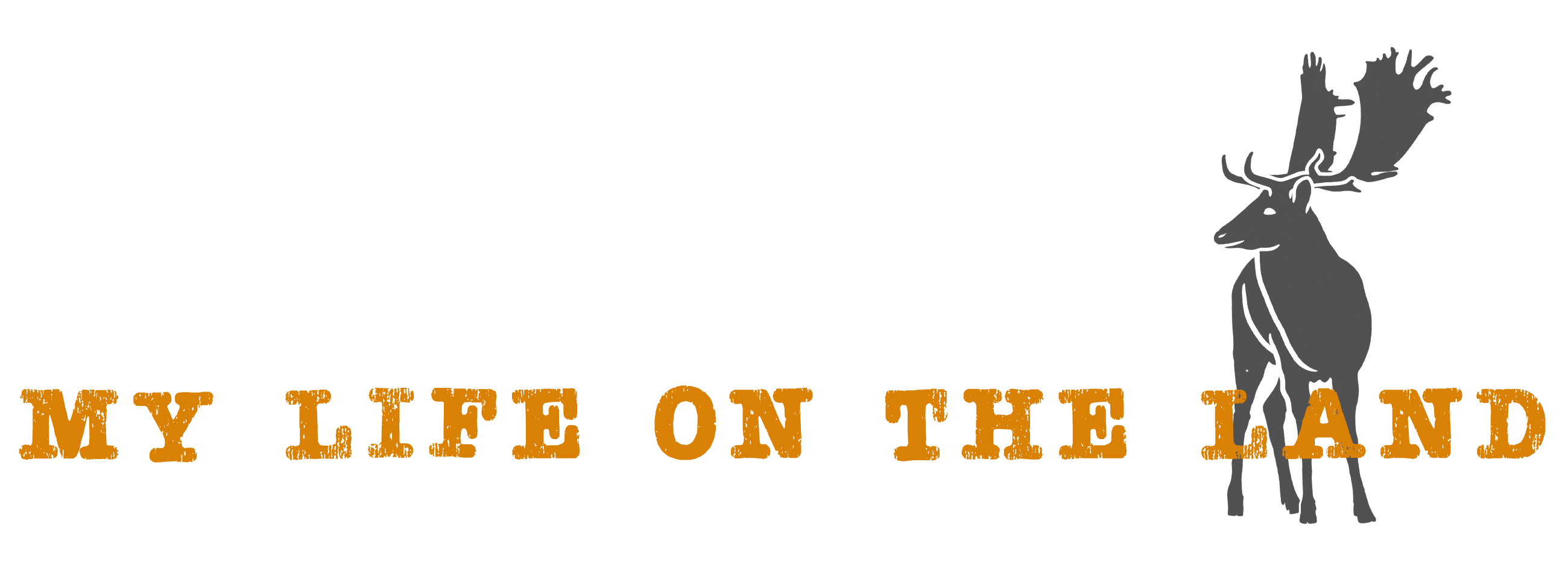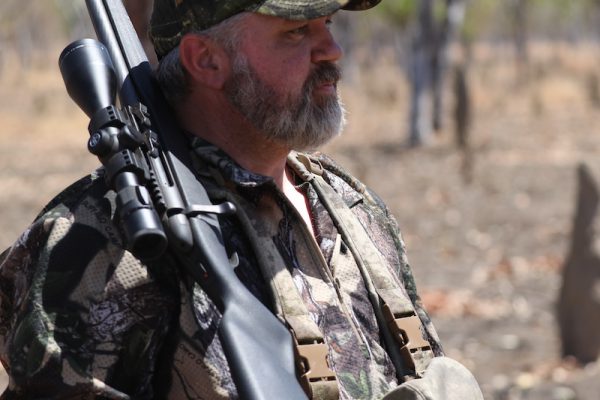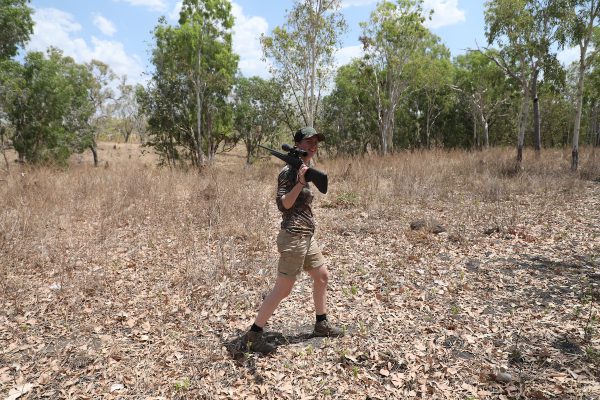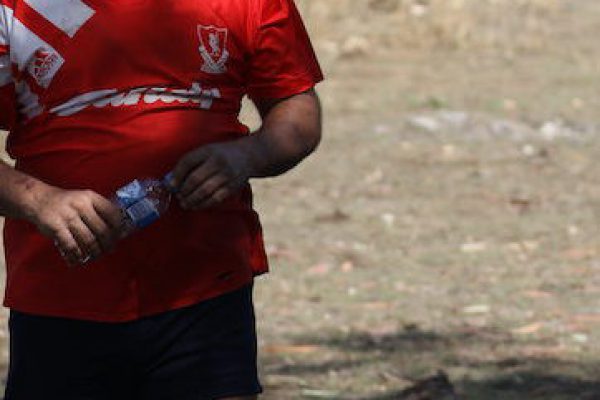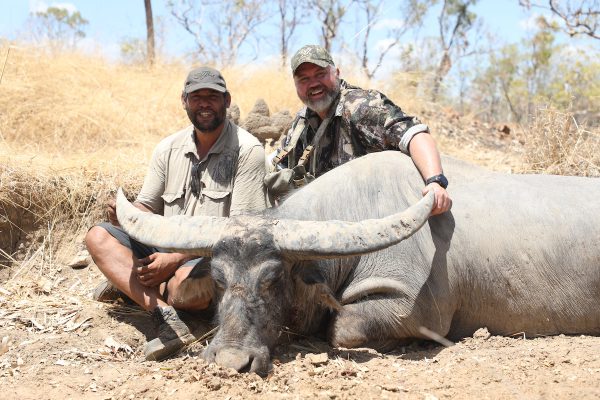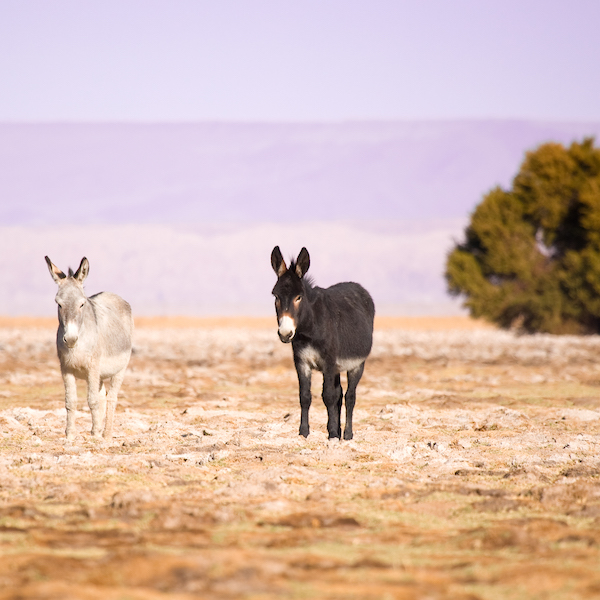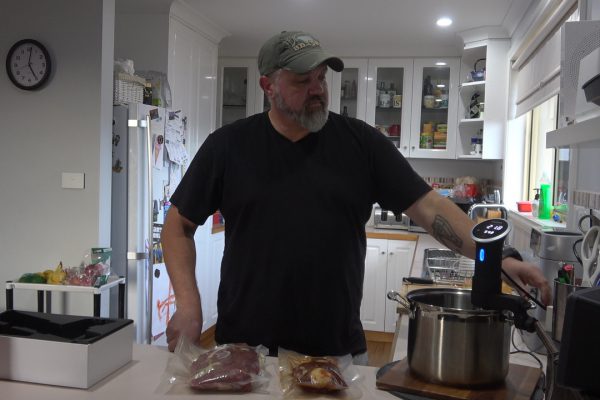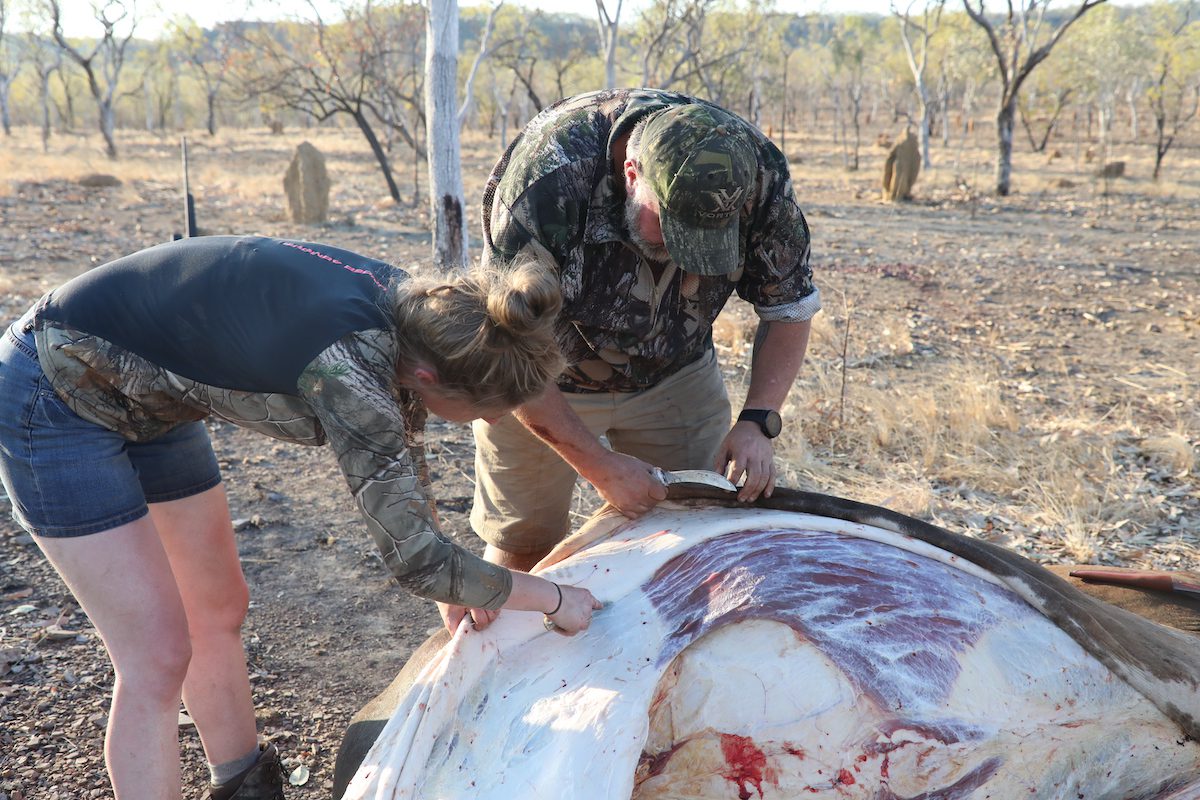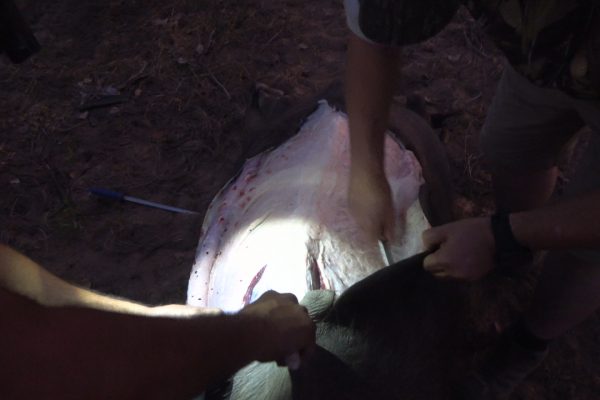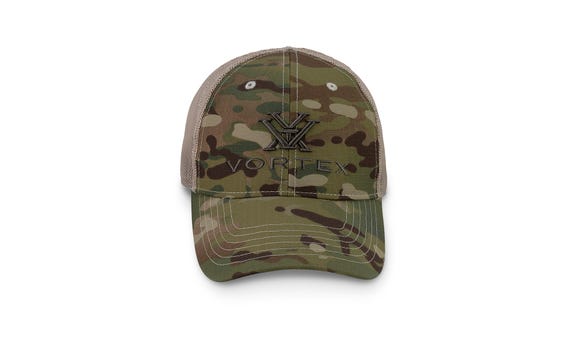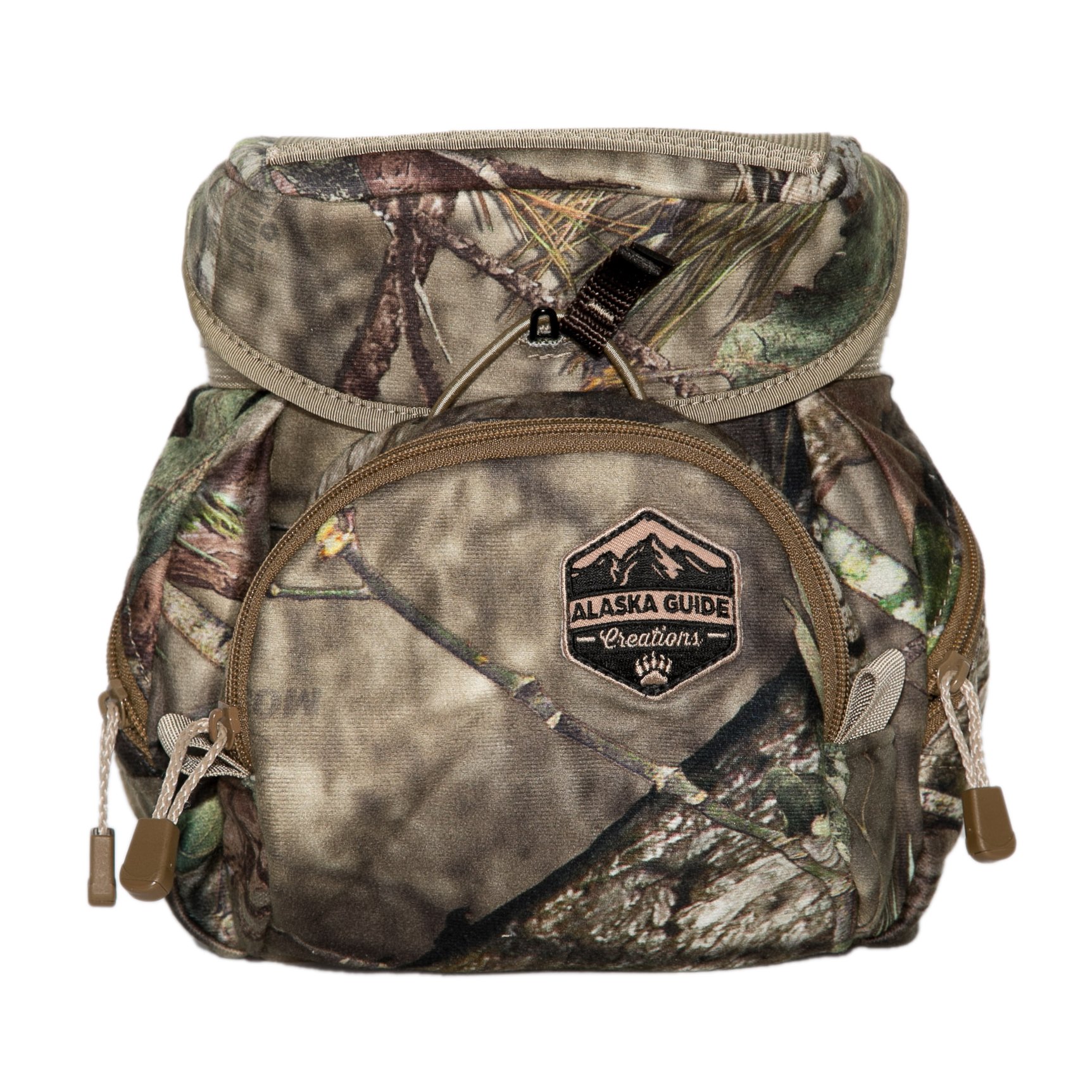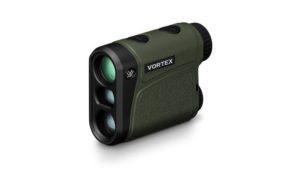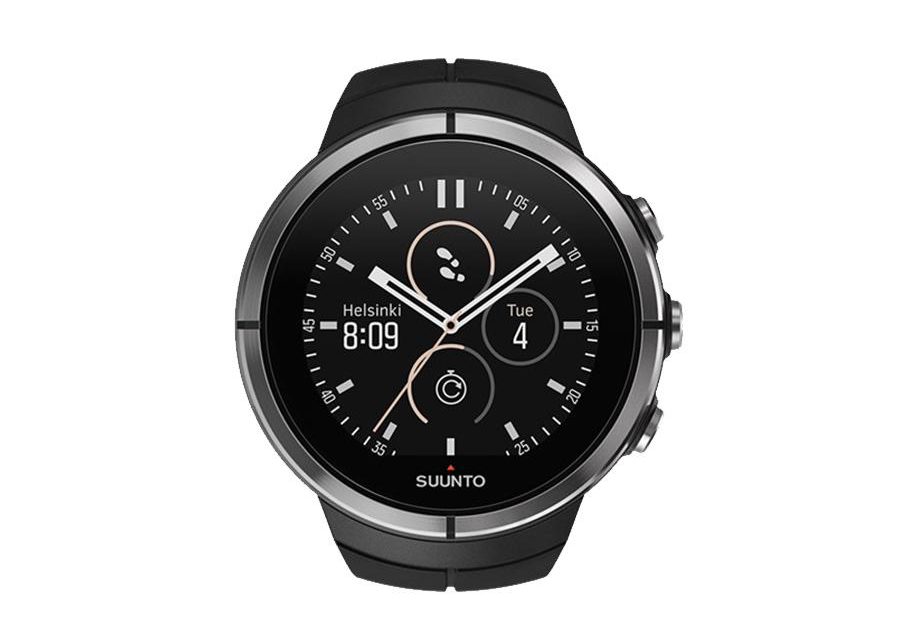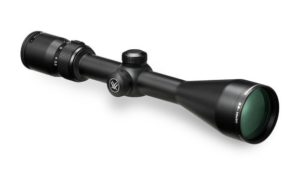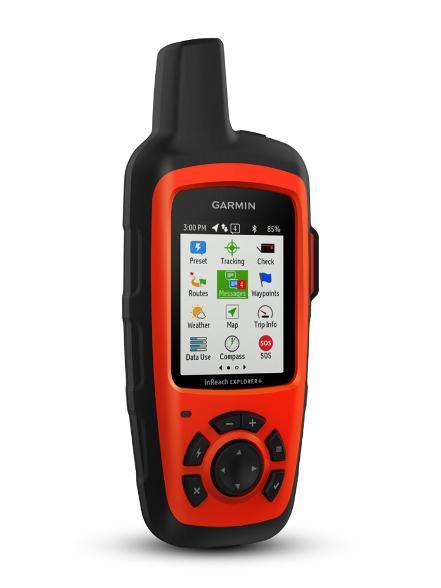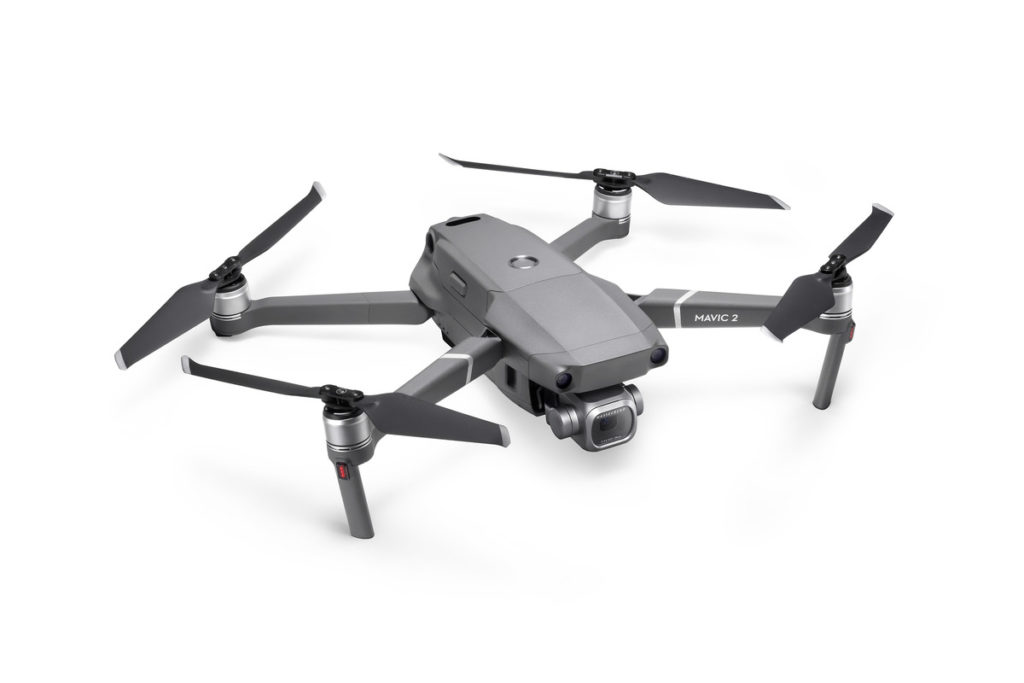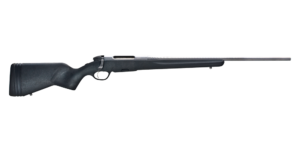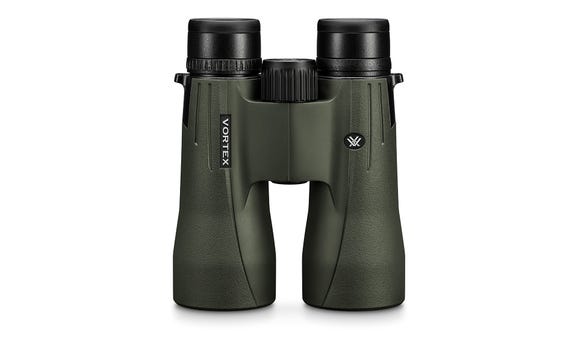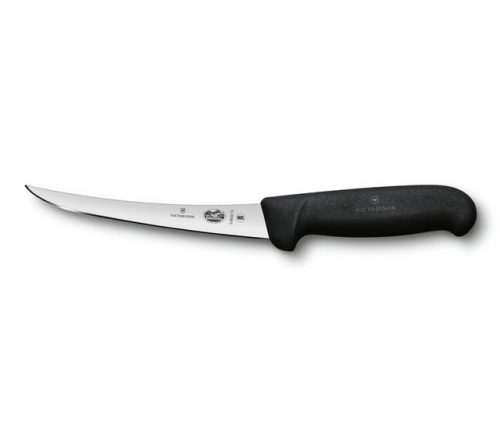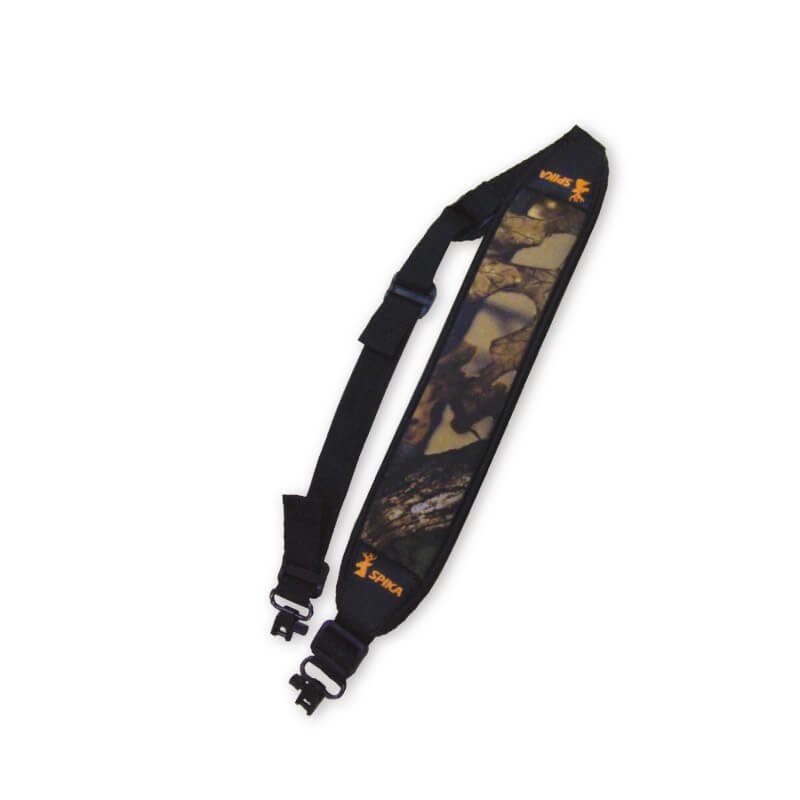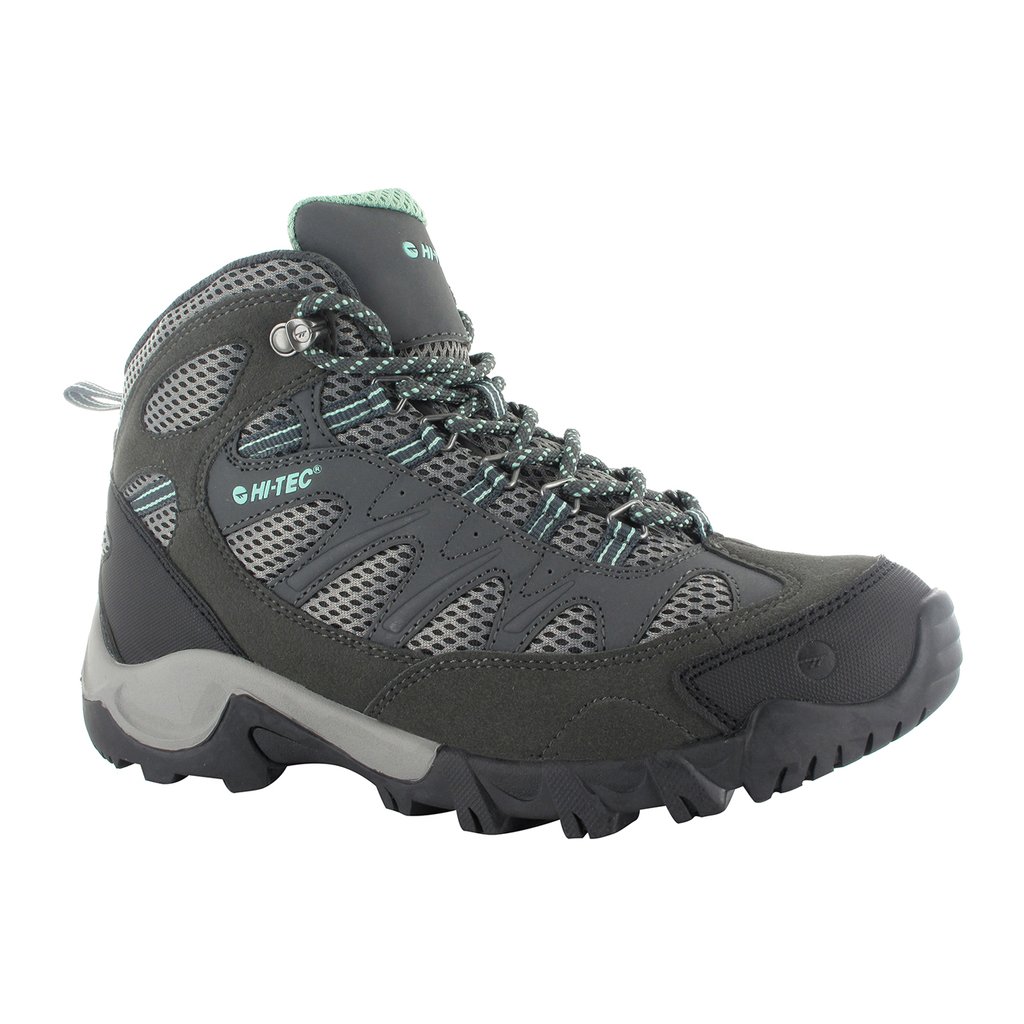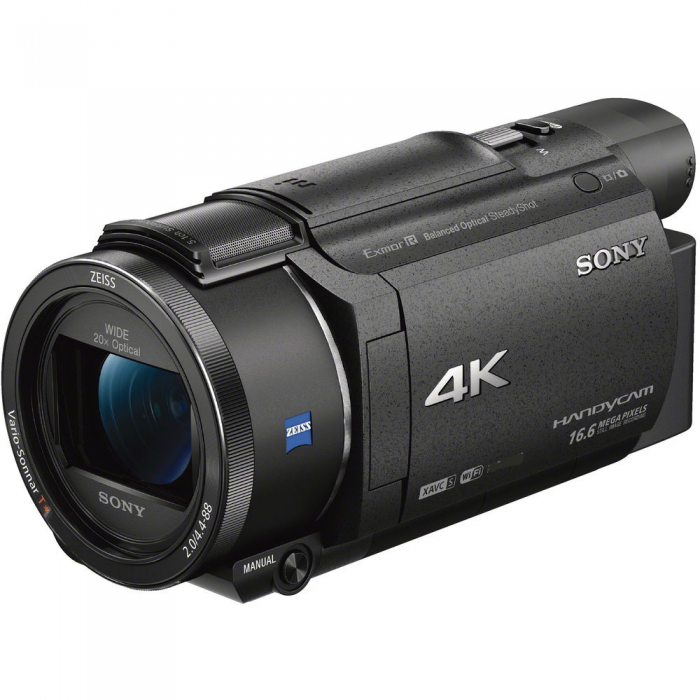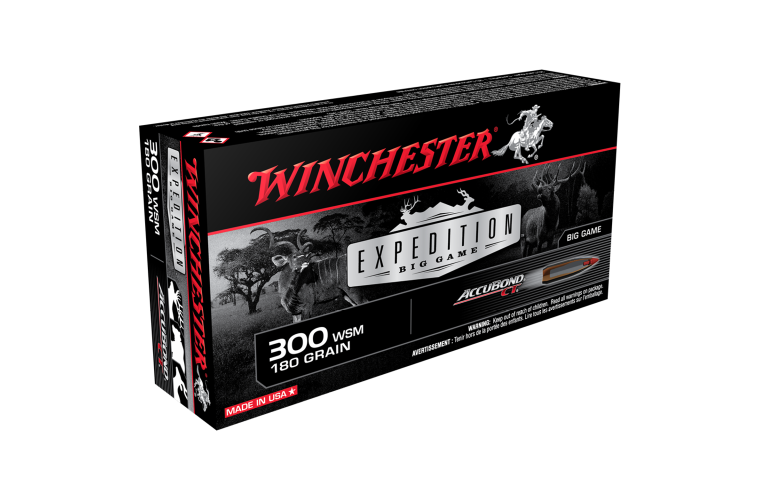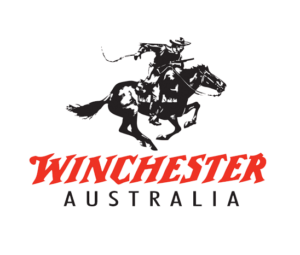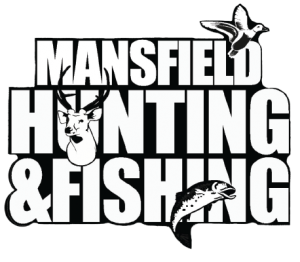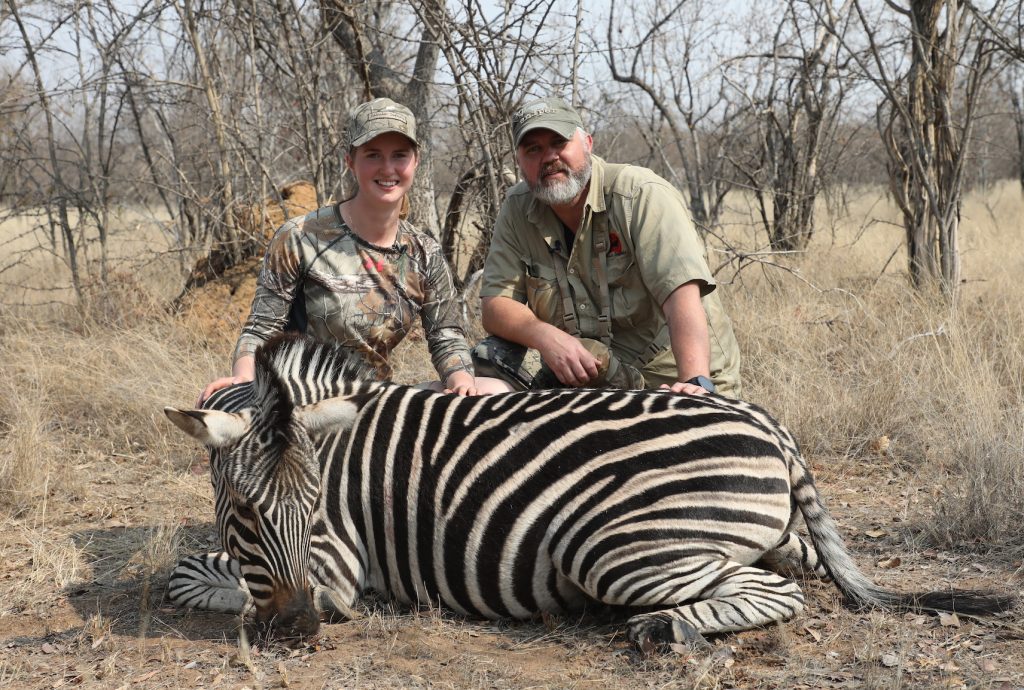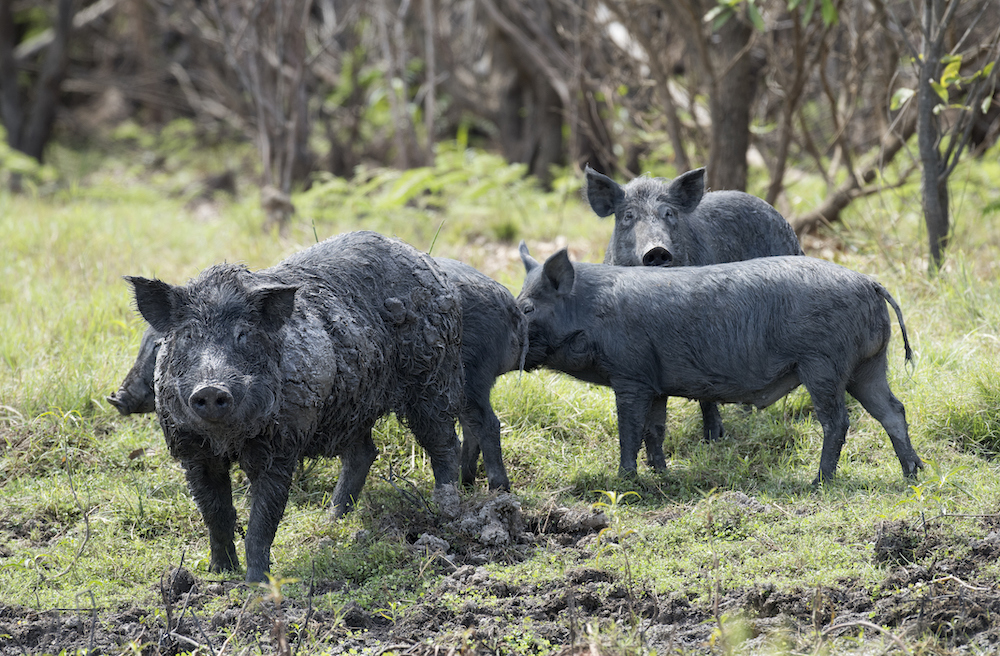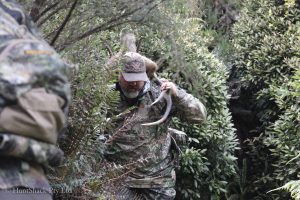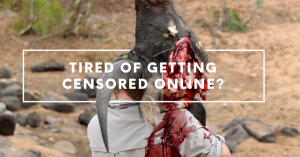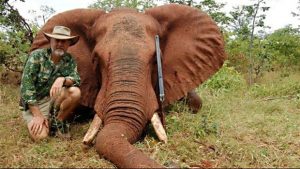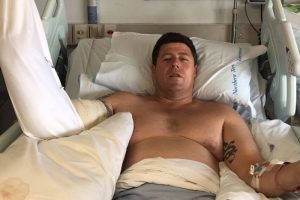Behind the Scenes
Jump to
The Hunt
In this episode, Rod and Jess hunt Australia’s biggest game species, the Asiatic Water Buffalo in the Northern Territory.
After a six hour flight from Hobart, they landed in Darwin. It was midnight, and they still had a four hour drive to get to the hunting concession.
After a quick pit stop at a convenience store to stock up on Snickers bars, they hit the long, long road to head deep into the Australian Outback.
It is hard to describe just how big the landscape is in the Outback. Out here, they don’t measure land in acres or hectares. It’s measured in square kilometres!
Our hunting concession is 2,200 square kilometres. To put that into perspective, that’s about 220,000 hectares or just over half a million acres. That’s the size of Mauritius.
You could literally drive for days and not see a neighbour.
And up here, there are no traditional seasons. No summer, winter, autumn and spring. Nope. It’s hot all year long. The only change to the seasons is wet or dry.
The hunting season up here occurs during the dry season, as the roads are pretty much inaccessible once the rains come.
We finally pulled into the hunting concession just before 5am and hd a choice to make. Have a sleep first and hunt in the afternoon, or head straight back out and get cracking.
We’d been awake for over 30 hours, so it only took us about 5 seconds to make up our minds. Forget sleep. We were super pumped to see those big buffs in the wild.
Throwing our bags into the caravan, we grabbed a quick bite to eat, got the Steyr .300 Win Mag out of its travel case, and jumped straight back in the 4WD to go hunt down some buffalo.
Most of the land in the Northern Territory is owned by indigenous tribes and you cannot hunt on it without the correct permission and permits. Thankfully, our guide, Nondas was related to Jonathan, our tracker, through marriage, which gave him the exclusive hunting rights for the whole property.
Owing to the sheer size of the land, not to mention the heat, it is impossible to completely spot and stalk. The areas are just too vast. But neither did we want to just shoot out of the car.
So we drove until we saw signs of the buffalo, and then we got out and trekked the rest of the way on foot.
We saw plenty of wildlife. According to the NT Tourism Board, over 400 species of birds, 150 species of mammals, 300 reptiles species, 50 species of frogs, 60 species of freshwater fish and countless different species of insects call the Territory home – with new species still being discovered.
It is hard to get your head around the fact that an area so remote can be teeming with so much wildlife. Then again, perhaps it is the absence of big cities that allows nature to flourish. The only people out here are the indigenous tribes, who have hunted and managed the landscape for thousands of years.
But perhaps the biggest oxymoron to get your head around out here is that, even in the face of such an abundance of life, death waits around every corner.
You need to be tough to survive the Outback. From the salt water crocodiles that frequent the rivers, creeks and waterways, to the venomous snakes and spiders hidden where you least expect them, to the big game animals we’d come to hunt, to the sheer emptiness of the landscape itself.
We had been driving for a few hours when we stumbled across a broken down vehicle. They were local boys who had forgotten to put the car into 4WD before driving across the soft sand. They got bogged deep and had been unable to get themselves out. While we were able to winch them to safety fairly easily, we couldn’t help wondering what would have happened to them if we’d taken a different route. They’d already been out there for hours, and they were a long way from any help! I suppose that’s why there are stories of people getting lost out here and never being found.
While we were up here to hunt water buffalo, there are plenty of other animals to hunt including scrub bull, wild dog, feral pig and donkey.
Yep, you might think donkeys are a strange thing to hunt, but there are over 5 million feral donkeys in the Territory and while they may seem harmless enough, they do untold damage to the native plants and bushes with their hooves – not to mention competing for limited food and water.
We bagged ourselves a couple of Jesus taxis and were keen to try to meat back at camp. Donkey meat is a delicacy in Italy, where they use it to make salamis.
We were ready to call it a day – the lack of sleep was definitely catching up on us – but we spotted a really nice buffalo bull on the way back to camp and all thoughts of sleep suddenly went out the window.
It took three shots from a .300 Win Mag to get him on the ground, and several hours to break down the carcass.
By the time we got back in the car to head back to camp, the sun had well and truly set. After a quick bite to eat, we climbed into bed – and having been awake for more than 40 hours straight – were soon dead to the world.
Day 2 started slow. We slept in, had a relaxed breakfast and didn’t hit the road until after 8am.
By mid-morning, Jess faced down her first buffalo, an angry old beast that gave her the stinky eyeball before snorting and taking off into the bush.
It didn’t take too long to get another opportunity. Jess even managed to do it with one less shot than Rod.
Despite Nondas assuring us that buffalo aren’t usually aggressive, we’d interviewed Danny Vanbrugh, a Queensland taxidermist who learned the hard way what the horns of a buffalo feel like. So we allowed plenty of time to ensure the big buff was really down before we slowly and carefully approached.
The team hunted for five days in total, but you’ll have to wait or Part 2 to see what else they got.
The Location
The hunt took place at Wugularr, an Aboriginal community deep in Arnhem Land on the banks of the Waterhouse River. Approximately 512 people call Wugalarr home, and the median age of the population is just 23 years old.
It is 112kms to the nearest town, Katherine, which has a population of just over 6,000, and over 400kms to the big smoke (Darwin), which has a population of just over 132,000.
This makes the Northern Territory one of Australia’s least populated states. It has a population density of just 0.17 people per square kilometre. As a comparison, Sydney has 412 people per square kilometre, while Los Angeles and New York have population densities of 3000/km2 and 10700/km2 respectively.
The hunting concession itself is 220,000 square kilometres. When you Koo Wee out here, there’s nothing much to hear you.
Our guide is Nondas and his brother-in-law, Jonathan. Jonathan is part of the Wugularr Aboriginal Community.
HuntShack acts as agent for Nondas, and handle any bookings. A trophy water buffalo or scrub bull hunt starts at $8000. We also offer meat hunts and cull hunts.
Animals hunted
In this episode, Rod and Jess hunted the Asiatic water buffalo. Weighing in at a massive 1200kgs, they are definitely Australia’s largest game species.
There’s an estimated 150,000 buffalo in the Northern Territory, which might not seem like much, but when you consider their sheer size, the damage they do to the environment, and the simple fact that their only predators are the salt water crocodiles that share the swamps with them, you can easily see why it’s so important to keep their numbers in check.
Recreational hunting remains one of the best ways to do this.
The team also hunted some donkeys, which might seem an odd choice for a game species, however, there are 5 million feral donkeys in the Territory alone!
Click the images below for a more in-depth look at both of these species.
NAME
Asiatic Water Buffalo
SCIENTIFIC NAME
Bubalus bubalis
RECOMMENDED FIREPOWER
Firearm - .300 Win Mag or larger / Bow - min. draw weight 70lbs
OPTIMAL HUNTING SEASON
July - September
WHERE TO HUNT
Northern Territory, Australia
NAME
Donkey
SCIENTIFIC NAME
Equus Asinus
RECOMMENDED FIREPOWER
Firearm - .270 or larger / Bow - min. draw weight 45lbs
CONSERVATION STATUS
Feral Pest
WHERE TO HUNT
Northern Territory, Central Queensland, Western Australia, South Australia
Game Saver Tips
 A single buffalo backstrap weighs between 5 and 7 kgs. We were able to bring six of them home, vacuum sealing them into bags using our Gamesaver (which comes with us on nearly all of our hunts). That made transporting it home on the plane really easy.
A single buffalo backstrap weighs between 5 and 7 kgs. We were able to bring six of them home, vacuum sealing them into bags using our Gamesaver (which comes with us on nearly all of our hunts). That made transporting it home on the plane really easy.
Unfortunately, as excited as we were to try the donkey meat, we made a rookie error and left the donkey backstraps in the ice too long. Ice doesn’t last well in the Outback. Even in an esky it tends to melt pretty fast. And there’s nothing more unappealing than a soggy lump of grey meat that has been marinating for hours in a bloody soup!
Back home in Tassie, we were super keen to cook up a buffalo steak. We even wet aged the meat for an extra week. And while the flavour was awesome, it did give the old jaw a bit of a work out.
And herein lay our problem. Backstraps make great steaks. Cut from the tenderloin muscles that run along the backbone, they are perfectly suited to cooking quickly at high temperatures. The buffalo had a great flavour but there was no getting around its toughness.
With 30kgs of it in the freezer, we were either going to end up with the world’s strongest jaw muscles, or we needed to find an alternative.
Knowing tougher cuts of meat generally do well slow cooked, we had a go at making a buffalo backstrap pot roast.
Again, awesome flavour and the meat was definitely softer this time. But the long cooking time had actually dried out the meat. You see, slow cooking is designed to break down the fat and connective tissue in cheaper cuts, which adds moisture back into the meat. The backstraps were just too lean. They had no fat or connective tissue. While we persevered through, we really weren’t looking forward to those other 28kgs of buffalo!
In the end, it was our local butcher, Chris, who came up with the perfect solution. He suggested we try sous viding the meat.
Sous vide is a French style of cooking that uses a water bath to gently slow cook food to perfection. Unlike other forms of slow-cooking, where temperatures can fluctuate, and the food can cook unevenly, the sous vide wand keeps the water temperature constant. In addition, the food is sealed inside a bag and immersed into the water, making sure it cooks evenly and with no moisture loss.
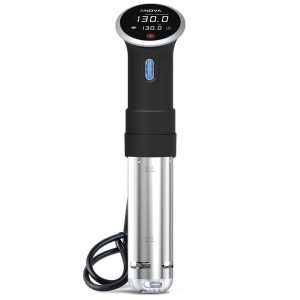 After doing a bit of research, we settled on the Anova. Crossing our fingers, we vacuum-sealed some buffalo steaks into a bag, and secured them under the water. The website has a ton of different recipes you can try, but there wasn’t really any instructions for water buffalo meat. In the end, we set the temperature at 55 degrees Celsius and cooked it for 24 hours.
After doing a bit of research, we settled on the Anova. Crossing our fingers, we vacuum-sealed some buffalo steaks into a bag, and secured them under the water. The website has a ton of different recipes you can try, but there wasn’t really any instructions for water buffalo meat. In the end, we set the temperature at 55 degrees Celsius and cooked it for 24 hours.
It was a long time to wait for a meal – and not really something you’d throw on at the last minute – but they say good things come to those who wait.
And that buffalo steak…
Mmm it was delicious. Super soft and tender. Full of flavour. And still a little bit pink on the inside!
We’ve included a link below for how to cook using a sous vide machine, as well as a couple of other reco included a link to a video on how to debone a wallaby leg, as this is where you will find most of the meat.
Gear List
You can click on any of the images below to go to the website to purchase or find out more about any of the products that we used in this episode.
We have tried to make the list as exhaustive as possible, however, if we have missed anything that you would like to know more about, please send us an email at team@huntshack.net and we’d be happy to help out.
If you are a member of I Am Hunter, you can save money on some of these products by using your exclusive discount codes available on the Discounts and Rewards page. If you are not a member of I Am Hunter, you can still click on the images to go to the product listings and as always you are more than welcome to join I Am Hunter to access all of our member rewards for yourself.
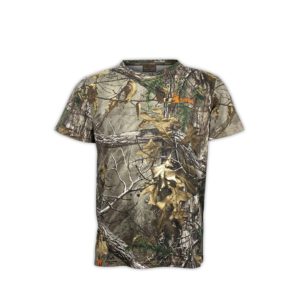
Spika Trail Camo T-Shirt
*IAH members can get 10% off through Mansfield Hunting & Fishing
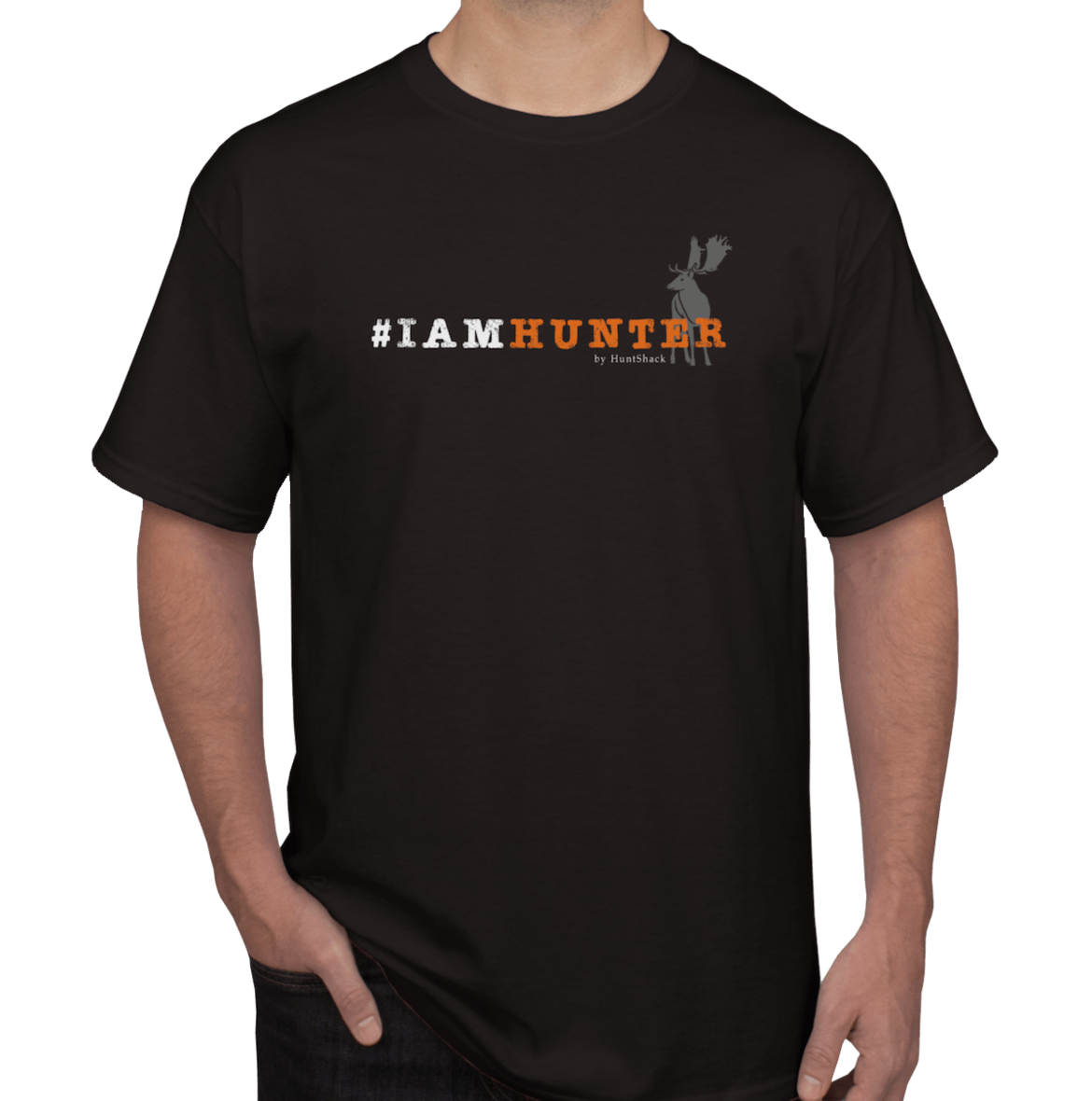
I Am Hunter Top
*IAH members get a free IAH t-shirt with their membership
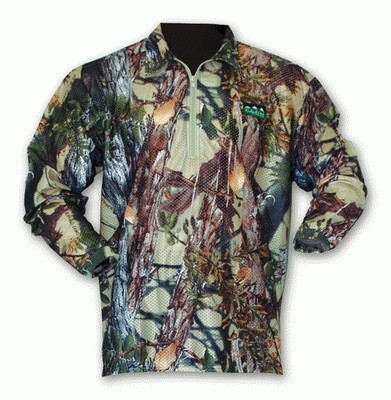
Ridgeline Sable Air Flow Top
*IAH members can get 10% off through Camo Warehouse
Watch the full episode (members-only)
Where can I watch this episode?
Episode Sponsors
What is I Am Hunter?
I Am Hunter wants to change the way hunting is perceived and to change the conversation from a negative one driven by anti-hunters to a positive one led by hunters.
Our goal is to help hunters become positive role models and ambassadors for hunting, while simultaneously helping non-hunters understand why hunting is important.
You can become a supporter and help us achieve our goal and spread a positive message about hunting with the wider community.
Related content
Check out these related articles and podcasts.
Our other channels
Get our newsletter
Get our free monthly newsletter direct to your inbox
Listen on iTunes
Listen to our podcast on iTunes.
TV series
Watch I Am Hunter episodes on My Outdoor TV (MOTV)
